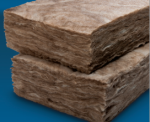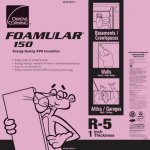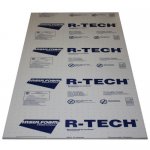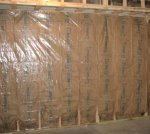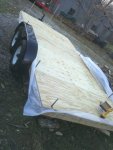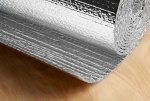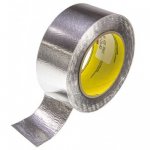- 1,719
- 1,815
- 113
- Location
- Nova Laboratories, WA
Intro..
Here I'll go over the basics of insulation. This is designed to be a general guide, and won't cover every aspect.
There are other things to consider, like condensation, water vapor, thermal breaks, etc. that will come into play. You'll find that insulation needs will vary based on climate, and there's no 'one size fits all' when it comes to what's needed.
Insulation is rated in R value. The higher the value, the greater the resistance to change in temperature.
I will not be covering things like Denim, or Thinsulate, as they're their own beast.
Let's start out with the basic stuff, that everyone knows about...
-----------------------------
Fiberglass is what you'll find in the walls of the boxes on military vehicles like the M109, M934, M820, and M1010. It's a very basic material, easy to work with, and dirt cheap.
Pros
- Cheap
- Easy to use
Cons
- Retains water
- Loses R value over time
- Proper PPE is required
----------------------------------------------------------------------------------
Cellulose is designed for loose fill, and should not be used in an automotive application. The vibration will cause settling, and it is a moisture sponge. DO NOT USE. I'm not gonna cover the pro/con because it shouldn't even be considered.
------------------------------------------------------------------------------------
Extruded polystyrene is your familiar pink panel that you can pick up at your local hardware store. It's VERY easy to work with, and can be cut to virtually any shape or size. It comes in both standard panels, and foil backed panels.
Pros
- Less expensive than Poly-Iso
- Easy to use
- No PPE required
- Mold/Mildew resistant
- Higher R value than fiberglass and EPS
- Stable R value
- Will not collect moisture, can act as vapor barrier
- Extremely low weight
Cons
- Not designed for sunlight exposure, will degrade material. (If it's in a wall, this isn't an issue)
- Flammable. Temps above 250*F will cause it to melt.
- More expensive than fiberglass
EPS is very similar to XPS, so the Pros/Cons are virtually identical, but it does differ in a few ways.
- EPS is less dense than XPS, and as such, weighs less. This also gives it a lower R value
- EPS can retain up to 4% moisture, vs the XPS which can absorb less than .3%
- EPS cannot be used as a vapor barrier
- EPS is about HALF the cost of XPS
- EPS is generally MORE flammable than XPS
--------------------------------------------------------------------------------------
Poly-Iso is generally regarded as one of the better insulation methods, but in mobile environments, it has some issues. One of the many issues, is the lack of cold weather performance. Poly-Iso will lose it's R value as temperatures drop. An R5 XPS panel will actually outperform an R7 Poly-Iso panel, when below freezing. If you're planning on running a rig in a cold environment, this might not be the best bet.
Pros
- Highest R value of rigid foam board
- Easy to use
- No PPE required
- Higher R value than fiberglass, EPS, and XPS
- Not very flammable
- Excellent hot weather performance
Cons
- Loses R value in cold.
- Readily absorbs moisture - can get waterlogged if wet.
- Most expensive rigid insulation board
------------------------------------------------------------------------Polyurethane foam is a relatively new thing. The nice thing about spray foam, is that it covers EVERYTHING. The bad news is, it covers EVERYTHING. It can provide a vapor barrier if the proper thickness, and prevents thermal transfer due to small cracks or openings not covered by rigid foam. It's also VERY rigid, and can provide additional structural support.
Pros
- Can easily fill cracks and holes
- Can create an air tight seal
- Higher R value than EPS, XPS, and fiberglass
- Water resistant
- Mold/Mildew resistant
- Not very flammable
- Adds to structural rigidity
- Longest lasting
- Stable R value
Cons
- Generally not a DIY project (kits do exist)
- Ridiculously expensive
- Requires proper PPE
- Requires a cure time, which can be months, to offgas properly.
Stacking (mixing of products)
Stacking of products is possible, where needed, however it's usually a compromise. For example, let's say you wanted the superior heat rejection of Poly-Iso, but the cold weather performance of XPS, you could use a layer of each, with a barrier in between. However, this would give you only a marginal increase in each area, and the added expense and difficulty is generally not worth it...
--------------------------------------------------------------


